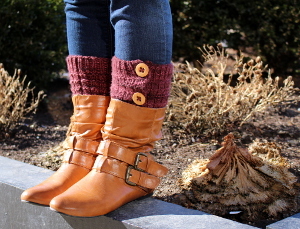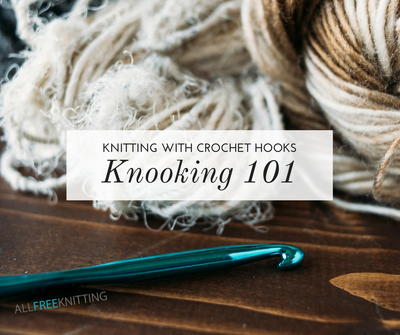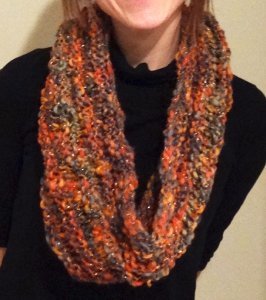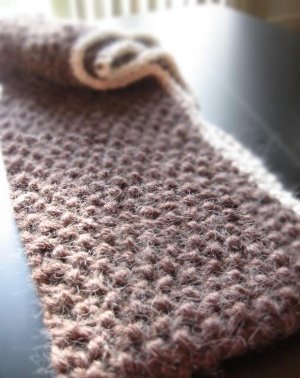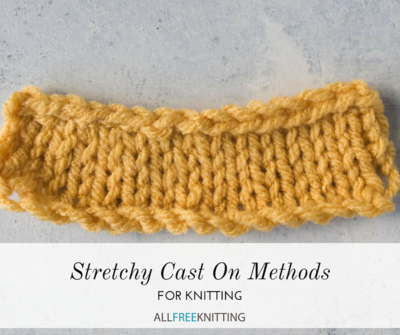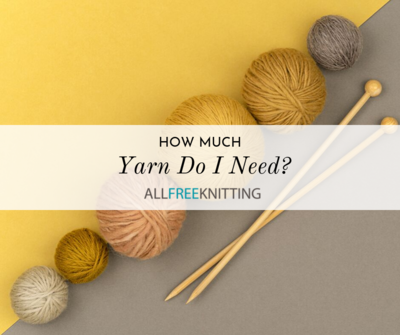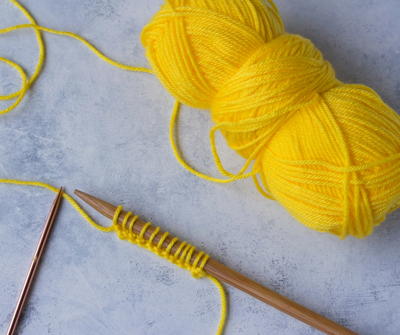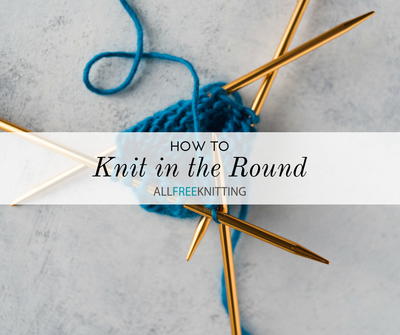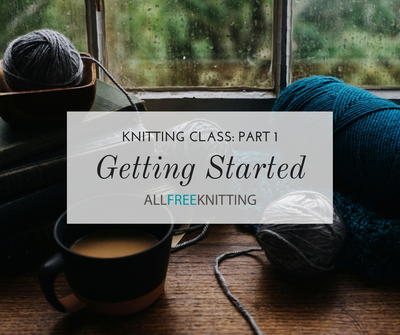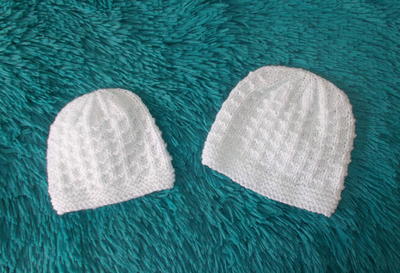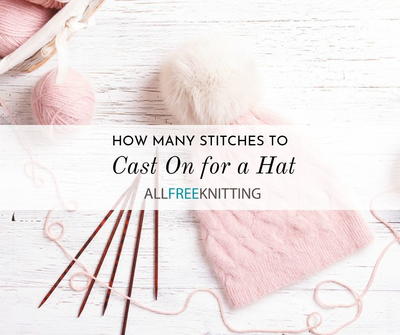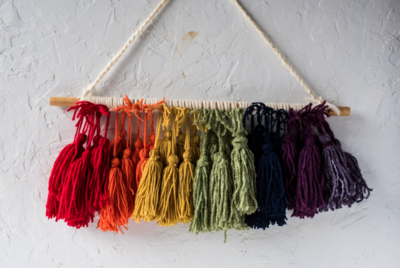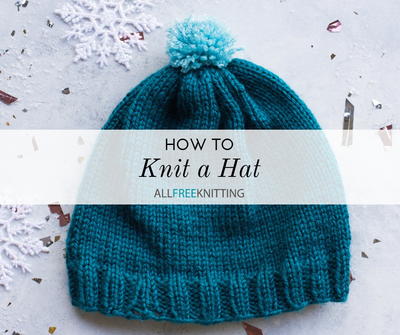Knooking 101: Knitting with Crochet Hooks
Knooking is so simple to learn for knitters AND crocheters. Plus, we've included some free knooking patterns for you to try!
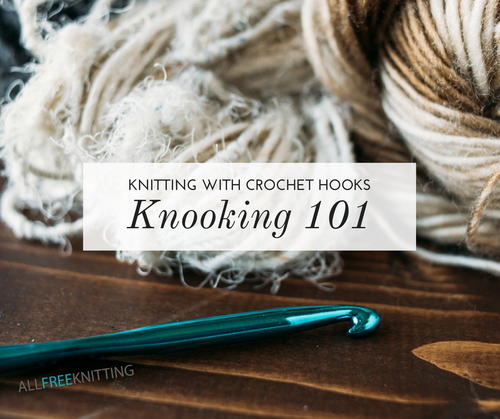
Learning how to knook is a great way for knitters to segue into crocheting and for crocheters to try their hand at something that looks more like knitting. Whether you do one or the other or both, knooking is a fun way to try something new with your fiber arts love!
Discover the ins and outs of this crochet and knitting hybrid that creates a knitted fabric from crochet hooks!
Knooking is a one-of-a-kind technique that creates a knitted fabric with the methods of crochet. In order to complete knooking patterns, you need to slightly new ways of doing the knit and purl stitches, so it's important to keep in mind it's not exactly a shortcut for learning how to knit. Whether you want to knit or knook will ultimately be up to you, but it's always fun to learn a new crafting technique.
Whether you knit or knook typically depends on what type of pattern you plan to work up. For instance, if you want to make a sweater or a pair of socks, knitting is probably the preferable method. If you simply love the look of knitted fabric and you want to make small projects, knook patterns may be right up your alley.
What Is Knooking?
Knooking is a style of knitting that uses a crochet hook with an eyelet to attach a cord (also called a knook). The cord at the end of the hook acts like your second needle, holding the live stitches in place while you knook the next row with the crochet hook.
It might seem odd at first, but knooking is actually a very clever hook technique that allows you to create a fabric that looks like knitting by using a special crochet hook. From a technical standpoint, the stitches that you make when you knook are the same as knitting and purling, but they are done in a different way, so if you're used to knitting and purling normally, you'll have to learn slightly different techniques in order to knook.
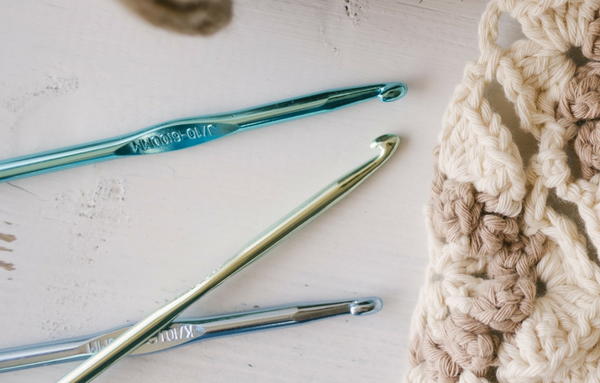
Knooking vs. Tunisian Crochet
You're probably thinking, "a knitting and crochet hybrid?" Sounds like Tunisian crochet.
But it's not! While there are many similarities between these techniques there is a fundamental difference between the stitches you use in knooking and the ones made with Tunisian crochet.
The main difference is that Tunisian crochet picks up stitches from the previous row with a slip stitch, whereas knooking actually uses the crochet hook to do a knit or purl stitch through the previous row of stitches that are still "live" on the cord.
That said, because both of these techniques work by keeping "live" stitches on the hook, both give very neat and organized rows of stitches that closely resemble knitting.
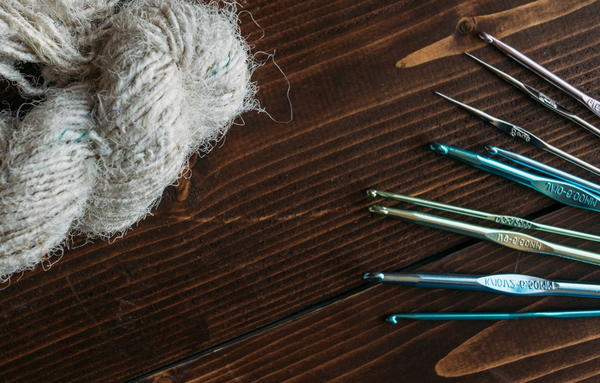
How to Knook
Learning how to knook is fairly straightforward, and once you get the hang of it, you'll be a pro in no time. The knook is a crochet hook with an eye at the non-hook end accompanied by a nylon cord that's attached to the eye. If you are familiar with a locker hook, a knook is exactly the same.
Materials:
- Knooking hook
- Cord for the hook
- Yarn
Instructions:
- Thread the cord through the eye of the knook. The cord will act like your second needle, holding your live stitches for when you start knitting subsequent rows.
- To begin knooking, simply crochet a single chain for the number of stitches required in the pattern.
Note: Not sure how to chain? Check out this tutorial from our friends at AllFreeCrochet. - The next row will be the first row of knooking. To knook this row, simply insert your hook into the chain stitches and pick up your working yarn.
- Next, turn your knook just like your would a knitting needle and slip all of your loops back and onto the cord.
- To knook the next row, you'll use your hook to form the knit or purl stitches.
To knit: insert the hook knitwise
To purl: insert the hook purlwise - Next, wrap the yarn around the hook clockwise (counterclockwise for left-handed knookers). Then pull the yarn back through the stitch and let it rest on your hook.
- Once complete, the fabric will look very similar to knit stitches.
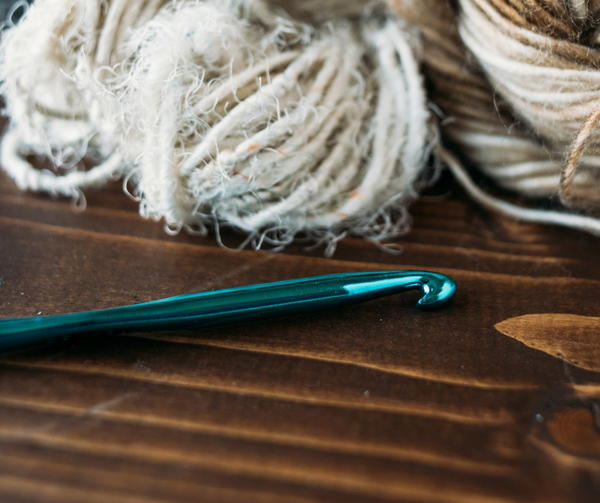
The Pros and Cons of Knooking
Knowing whether knooking is right for you will inevitably come from experience. In other words, the only way you will know if you like knooking is if you give it a whirl.
Pros
The bottom line is you can create a fabric that looks extremely similar to a knit fabric by using only the crochet hook and cord of the knook. If you are a crocheter already familiar with using a crochet hook, the knook pattern movements will most likely feel very natural right away. Thus, you may have an easier time learning the technique.
In addition, when you knook, you do not need to learn how to cast on. Rather, the first row is done by crocheting a chain which simplifies the process. Some knooking fans say there is less danger of dropped stitches, because the stitches remain on the cord the entire time you're working.
Cons
As is the case with most things, there are also some downsides to knooking. Namely, there is no method of securing the sitches and they are held on a nylong cord, so you need to be very careful whent transporting your project or you will be left with a large number of dropped stitches if the cord comes out.
Plus, if you want to make an item from a knitted pattern, you will need to do quite a bit of translation. There are some knooking patterns available, but the selection is limited at this time. That's not to say knooking will grow in popularity and you will have many interesting patterns at your disposal in the future.
Lastly, knooking requires knowing how to wrap the yarn in order to knit and purl. These are not the same stitches you already know from crochet, so knowledge of additional skills are required in order to create a successful knook project.
Is Knooking Right for You?
You will want to consider your goals when it comes to knooking, such as the type of projects you want to make. As mentioned before, larger projects such as socks, a hat, or sweater would be best served by traditional knitting. On the other hand, if you want to make small projects with the look of knitted fabric, knooking is a great alternative.
It is important to keep in mind the knook is currently a product manufactured by one company, so you only have one hook style available and a limited number of patterns. There are a myriad of possibilities when it comes to knit and crochet hooks/needles and patterns.
Knooking can be a lot of fun and it doesn't take a lot of time, so if you are looking for a novel, speedy technique, give it a try. You will get the look of a knitted item by only using a crochet hook and a nylong cord. Pretty cool, right?
Your Recently Viewed Projects
grandma vic
Sep 11, 2018
I love knitting with the crochet hook and cord. And it just doesn't look like knitting, it is knitting. I have just finished the Vogue Enchanted Forest Cardigan --which is quite complicated with no problems. You are just as likely to drop a stitch from a cord than a needle. I have also knitted a peacock feather patterned hat and a large afghan. You can knit any pattern as long as you understand stitch mount. The difference between crochet and knitting is that in crochet the stiches are closed --even Tunisian --after the second pass all of the stitches are closed and off the hook. In knitting the stitches are open until you bind off. This article is quite misleading.
Report Inappropriate Comment
Are you sure you would like to report this comment? It will be flagged for our moderators to take action.
Thank you for taking the time to improve the content on our site.


